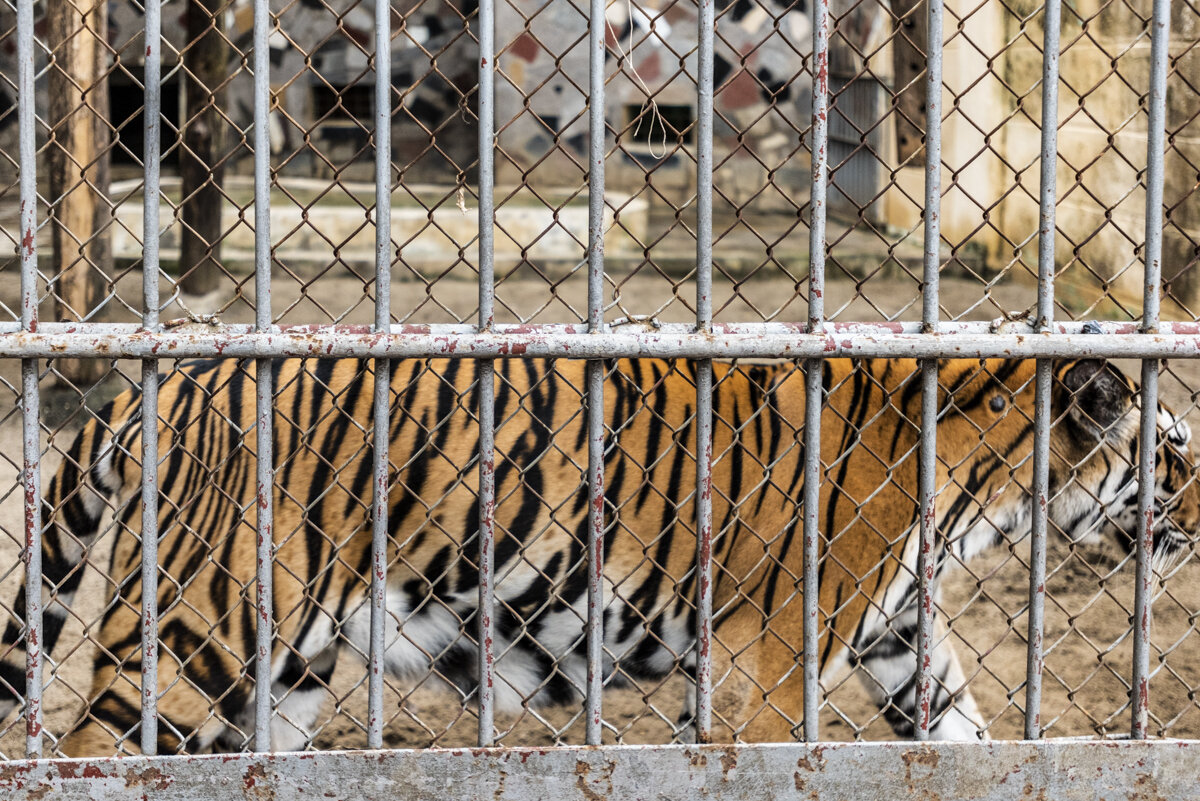
The Disturbing Truth of Tiger Tourism
Moving Animals documented the tiger tourism trade across South-East Asia, where thousands of tigers are held in captivity for human entertainment.
In collaboration with PETA and UNILAD Adventure
+ 11M Video Views
across social media
6 Venues
documented
2 Translations
in English & Vietnamese
The Issue
More than 8,000 captive tigers are currently being held in China, Thailand, Laos, Vietnam and South Africa. In the tourism industry, these big cats are forced to perform tricks, such as standing on their hind legs and jumping through rings of fire, all for the entertainment of the audience. Tigers are naturally terrified of fire, and so they are often punished into submission to overcome their fear. Sometimes, they’re even declawed or drugged so that tourists can take photos and selfies without being harmed.
When they’re not being forced to perform or being used as photo props, tigers in this industry are usually kept in chains or small, barren cages with no space to roam or exhibit natural behaviour. Many of them show signs of serious psychological distress, such as pacing back and forth. In their natural habitats, these animals would naturally roam across vast expanses measuring thousands of square kilometers - a stark contrast to the tiny cages they’re left in as part of the tourism industry.
So many tigers are just tossed aside when they grow too big to be used as props in photos. They’ll be left in cages, sold as pets, or sent to zoos, while some will become breeding machines so that they can produce more tigers and the cycle can continue. The cubs are typically separated from their mothers shortly after birth to familiarize them with human handling.
The captive-wildlife tourism industry is propped up largely by the ignorance of tourists, and in recent years, the problem has been made worse by social media. When backpackers, tourists, or social media influencers post their tiger selfies online, it encourages more people to take part in the exploitation of exotic animals.
Impact For Change:
UNILAD Adventure
Moving Animals joined forces with social media giant UNILAD Adventure to shed light on this critical issue. We aimed to bring this pressing matter directly to the audience - and would be tiger tourists - that have the power to drive change.
Through an emotive interview with MA co-founder Paul Healey, spoke on the issue, revealing how tourists create and contribute to this cycle of cruelty. The response was promising: seven million people watched the interview and witnessed the eye-opening investigative footage, guiding potential tourists away from supporting captive tigers.
People for the Ethical Treatment for Animals (PETA)
Across social media platforms, PETA strategically used MA images and footage to broadcast the message far and wide. A series of English-language videos gained three million views collectively, amplifying the urgent call to action, while the photographs were used to create a new educational campaign page.
The footage also transcended language barriers, with PETA Châu Á’s video ensuring that hundreds of thousands more individuals received the crucial message.
Update: three years after these visuals were documented, 11 of the tigers confined at one of the zoos were rescued thanks to the tireless work and dedication of Thailand’s biggest wildlife sanctuary, Wildlife Friends Foundation Thailand (WFFT). More information coming about this soon. Please support WFFT’s lifechanging work by sponsoring Susu, the tiger chained the podium, as she now enjoys her life of freedom.
Use these visuals
Visit the Entertainment gallery on the Moving Animal archive. For related footage, please get in touch.







